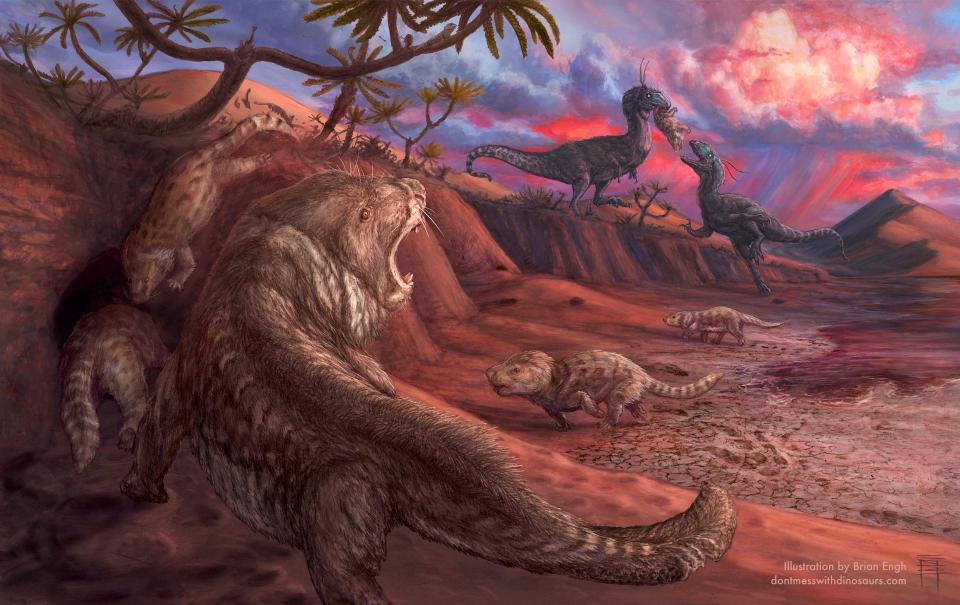Researchers find fossils of rare mammal relatives from 180 million years ago in Utah
A group of researchers in Utah discovered rare fossils of herbivorous mammal relatives that lived in the area about 180 million years ago, according to the National Park Service.
The paleontologists were exploring fossil track sites in March at Glen Canyon National Park in Utah when they came upon the tritylodontid mammaliaform fossils, the park service said.
Tritylodontid mammaliaforms were herbivorous mammal-like creatures who lived in the Early Jurassic period, about 180 million years ago.
This discovery is significant because Lake Powell’s water level would usually cover the area where the fossils were found. However, paleontologists found it by being in the best location right before the snow melted and filled the lake.

What do tritylodontid mammaliaforms look like?
A group of paleontologists worked with an artist to create a rendering of how the rare mammal relatives may have looked. The image depicts several relatively small creatures with heads similar to a large rodents, who walk on four legs and with tails that are approximately the length of their torsos.
“These finds suggest early dinosaurs & mammal relatives were social,” the artist, Brian Engh, wrote on X.
Fitting that it's #PortfolioDay as today we're unveiling 2 new pieces of #paleoart based on CRAZY RARE early #Jurassic #fossils discovered in #Utah by @AndrewTracks & @AdamMarsh!
These finds suggest early dinosaurs & mammal-relatives were social.
Thread w #fossils & #paleoart👇 pic.twitter.com/Edqt4lSUoF— Brian Engh (@BrianEngh_Art) October 10, 2023
Researchers collected several hundred pounds of rocks that contained fossils and fragments, according to the park service. The rocks will be scanned at the University of Utah South Jordan Health Center with X-ray computerized tomography (CT).
Then, they will be mechanically prepared and studied at the St. George Dinosaur Site at Johnson Farm (SGDS) with help from Petrified Forest National Park and the Smithsonian Institution.
Finally, they will be a part of the Glen Canyon NRA Museum collection on display at the Prehistoric Museum in Price, Utah.
This article originally appeared on USA TODAY: Glen Canyon fossil find reveals 180 million year old mammal relative

